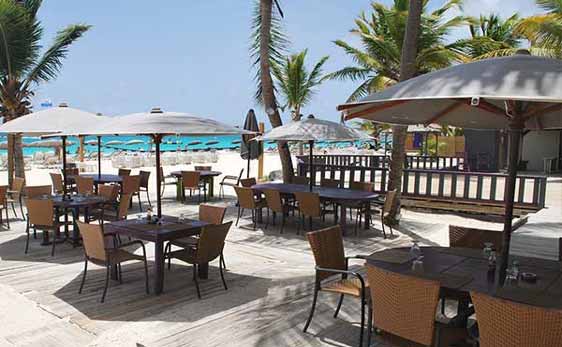A Small Island of All Trades
It is rare to find such a diverse mix of cultures on an island as tiny as Saint Martin. Politically and strategically divided between the French Republic and the Kingdom of the Netherlands, the country is considered a unique Caribbean gem with its rich cultural heritage on one side, and the amazing oceanic landscapes on the other. The island is pretty popular with tourists, particularly between March and July, because of its mild temperatures, busy nightlife, and scenic beaches. The French part of the island is also known for its amazing cuisine influenced both by its Caribbean ancestors and Gaelic settlers. Over the years, Saint Martin also became a popular shopping destination with a wide variety of goods offered at a low price.
According to legend Christopher Columbus anchored at the island of Saint Martin in 1493, during his second quest of the New World. His visit matched the feast day of Saint Martin of Tours, after whom he later named the island. Today, the French part of the island goes by the name of Saint-Martin, while the Dutch opted for another variation of Saint Maarten. Besides the official languages, English is commonly spoken, along with several local dialects.
How to get there
Saint Martin is a small island country surrounded by other former colonies of the Caribbean, mostly French and British, located east of Puerto Rico. The country has two airports, one on both nations’ sides. Since the Dutch side is significantly more developed, with the property market booming in recent years, the island’s main international airport is set in the northern part of the island. The Princess Juliana International Airport is considered one of the busiest airports in the Caribbean and is easily reachable by the world’s biggest airlines.
Flight landings and takeoffs present a tourist attraction all of their own, since the airport is extremely close to Maho Beach, and it is common to see airplanes fly just above sunbathers’ heads. The airport, as well as many other objects on the island, was heavily damaged after Hurricane Irma hit it in 2017.
There is one smaller airport on the island set on the French side, but it is used only for private and inter-island flights. Saint Martin is also a popular cruising spot. Every year, more than a million visitors come to the island from cruising ships and stay there for just a day or two, although full border controls, when entering or leaving the country are mandatory. Luckily, checks at the border between two parts of the island are not that frequent. Once you reach the island, you can get a taxi (both the water taxi or the regular one) or rent a car to experience the island in a more personal way.

Get Your Free Caribbean Report Here:
Learn more about the Caribbean and other countries in our daily postcard e-letter. Simply enter your email address below and we'll send you a free special report - The "Hidden", Affordable Caribbean
This special guide covers real estate, retirement and more in the Caribbean and is yours free when you sign up for our postcards below.
What to do
Activities on the island also differ from one side of the island to the other. The French part is calm and friendly, but lacks highly developed property infrastructure, which is why it attracts travelers who like to hike, explore the wilderness, and picturesque landscapes. This side is also rich with open markets, art galleries, farms and animal sanctuaries, as well as a surprisingly large number of nude beaches.
The Dutch side is very festive, with many nightclubs and cocktail bars spread around the country, particularly in the capital of Phillipsburg. This part of the island is also popular with shopaholics and casino lovers. Both sides of the island are blessed with magnificent sandy beaches, so most of the activities and tours are not much different than on any other Caribbean island. Expect a lot of snorkeling, sailing, speed boating, paragliding, and other typical beach activities.
How expensive is life on Saint Martin?
The cost of living on Saint Martin is a bit higher than in the U.S. and most European countries, although there are some benefits. Utilities, healthcare, and childcare are significantly cheaper, while the rent prices are somewhat the same. On the other hand, the daily cost of living (including entertainment, eating out, groceries, and other kinds of goods) is higher than many might expect.
This also applies to property prices, since this industry is booming in recent years. If you plan to move to the Caribbean, keep in mind to prepare an extra budget for home improvement and maintenance. The constant exposure to sun and salt from the seawater is not so kind on most of the fabrics, paint, and home appliances, so expect frequent repairs.
Considering all the facts, especially the multicultural aspect of living in Saint Martin, this unique island is surely worth visiting. In the past few years, it has become a popular destination for U.S. retirees, but its European appeal also attracts younger tourists. For those who can afford this charming slice of Caribbean paradise, it provides everything from a tranquil respite to a bustling nightlife.
*Featured Image Copyright: iStock/LanaCanada*

